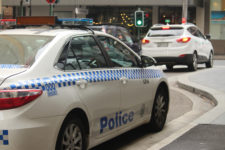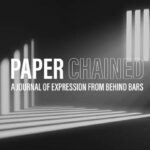Changes to the 40KM/H “Slow Down, Move Over” Road Rule

As of this Thursday, the year-old New South Wales rule requiring vehicles to slow down to 40 km/h when passing emergency vehicles on the side of the road will be changed.
Since 1 September 2018, the “slow down, move over” rule has required vehicles to reduce their speed to 40 km/h as they pass stationary police cars, ambulances and other emergency services vehicles with their lights flashing red or blue on the side of the road.
However, from 26 September, this requirement will also apply to tow trucks and motor breakdown service vehicles, such as NRMA Roadside Assistance. And the new law will no longer apply to roads with a speed limit of 90 km/h or above, as vehicles will now have to slow to a reasonable speed.
“If you are driving on roads 90km/h or over, you will need to consider how close you are to the stationary vehicle and slow to a safer speed and give as much space to the vehicle as you can,” NSW minister for regional roads Paul Toole explained in a media release last week.
The changes to the current road rule are being made following a 12 month trial period of the new law. And they’re in response to criticism levelled against the current regulation by the NSW Police Association, the NRMA and the Safer Australian Roads and Highways (SARAH) group.
The law as trialled
Regulation 78-1 of the NSW Road Rules 2014 currently stipulates that motorists approaching a stationary emergency vehicle with red or blue lights flashing must slow to 40 km/h and “give way to any person who is on foot in the immediate vicinity”.
A driver passing such a vehicle must not increase their speed until “a sufficient distance from the vehicle so as to avoid causing a danger to any person”. Although, these rules don’t apply if the emergency response vehicle is on the other side of a road with a median strip down the centre.
In relation to increasing speed after passing an emergency vehicle, the NSW Centre for Road Safety explains that if a fire truck is parked with its lights flashing, but the fire fighters are dealing with a fire further up the road, a driver must not accelerate until fully passing all the emergency response staff.
At present, these rules apply to vehicles belonging to NSW police, the NSW Ambulance Service, Fire and Rescue, the NSW Rural Fire Service, the State Emergency Service, Roads and Maritime Services, the Transport Management Centre and the NSW Volunteer Rescue Association.
For failing to abide by the slow down, move on rule, a motorist can be fined up to $457 and lose 3 demerit points. Over the last 12 months, 926 infringement notices have been issued in response to the regulation. And if the matter goes to court, a maximum penalty of $2,200 applies.
Calling for an overhaul
The Berejiklian government announced the new regulation in March last year and it came into effect on 1 September 2018, with the year-long trial that applied. And one of the chief proponents of the new law, the NRMA, began calling for an overhaul almost immediately.
Then NRMA chief operating officer Samantha Taranto outlined in April last year that the law needs to provide adequate protection for those assisting people who’ve broken down, as well as tow truck drivers, whose lives are also at risk as they carry out their jobs.
NSW Police Association president Tony King raised concerns last February about the law as it currently applies, as the requirement to slow down to 40km/h when travelling at 110 km/h actually endangers people’s lives rather than enhance safety.
Released this month, the Centre for Road Safety evaluation report on the law said that some people that had been interviewed had raised concerns about the requirement to slow down to 40 km/h as it is “potentially dangerous in some situations”.
Changes to the rule
The Road Amendment (Stationary Emergency Vehicles) Rule 2019 comes into effect on Thursday. It makes amendments to rule 78-1 so that it also applies to tow trucks and motor breakdown service vehicles parked at the side of the road with their yellow lights flashing.
The new legislation requires that a driver approaching a stationary vehicle in question must slow to 40 km/h if they’re travelling on a stretch of road that stipulates that vehicles must drive below 80 kilometres an hour.
As part of its announcement of the changes, Transport for NSW pointed out that over the five years ending in 2018, 85 percent of crashes that involved emergency vehicles parked on the side of the road happened in 80km/h speed zones or less.
The new amendment legislation further sets out that those approaching a stationary emergency services vehicle in a speed zone over 80km/h must pass “at a reasonable speed” and ensure that there’s sufficient distance to avoid a collision.
As well, if the road is multi-lane, a driver must vacate the lane nearest the stationary emergency vehicle, but only if it is safe to do so, otherwise they’re not required to move out of the lane.
Sarah’s law
The NRMA and the SARAH group have been pushing for the new law since university student Sarah Frazer and NRMA contractor Geoff Clark were killed by a passing motorist in February 2012, as the pair were standing in a breakdown lane on the side of the Hume Highway.
On 15 February 2012, Ms Frazer was driving to university along the highway close to Mittagong, when her car broke down. The 23-year-old Blue Mountains woman pulled into the breakdown lane and called the NRMA, with Mr Clark responding.
The breakdown lane was not built to the three metre standard and while Mr Clark was hooking up the vehicle to his tow truck, a courier van came around the corner at high speed sideswiping the vehicle and killing the pair instantly. And the driver was sentenced to 18 months prison time.
The rule has now been named Sarah’s law. Peter Frazer, Sarah’s father, formed the SARAH group, which was instrumental in bringing about the new rule. Mr Frazer recently told the Blue Mountains Gazette that he’s satisfied with the amended regulation as it recognises that “all lives are precious”.
Going to court for a traffic offence?
If you are going to court for a traffic offence, call or email Sydney Criminal Lawyers anytime to arrange a free first consultation with an experienced, specialist traffic lawyer who will accurately advise you of your options, the best way forward, and fight for the optimal outcome in your specific situation.








